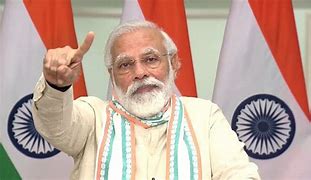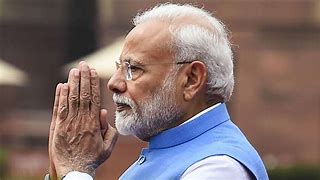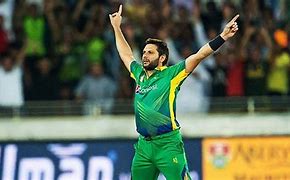Feature
Modi launches solar alliance, reminds rich countries of ‘green’ promises

Paris: Indian Prime Minister Narendra Modi launched an alliance of some 120-odd nations here on Monday to harness solar energy better and asked the rich nations to shoulder their responsibilities in protecting the environment, with funding and transfer of clean technology to poor and emerging economies without further delay.
He also said India would cut carbon emission levels substantially by 2030 by expanding renewable energy.
“Today, when the energy sources and the excesses of our industrial age have put our planet in peril, the world must turn to Sun to power our future,” the prime minister said at the alliance launch event with French President Francois Hollande.
“This is an alliance that brings together the developed and developing countries, governments and industries, laboratories and institutions in a common enterprise,” he said, offering to host this initiative in India, providing the requisite land and also making a contribution of $30 million for the proposed secretariat.
During his various engagements at the 21st Session of the Conference of Parties (COP-21) under the UN Framework Convention on Climate Change and side events, Modi said India has done its bit by targeting 175 gigawatt of renewable energy in seven years, and said the world must also act with urgency, led by rich nations.
“The entire world, 196 nations, have come together to shape the future of this world and the health of our planet,” said Modi.
“We want the world to act with urgency. We want a comprehensive, equitable and durable agreement, which must lead us to restore the balance between humanity and nature, and between what we have inherited and what we will leave behind,” he said.
At another event on innovation also attended by President Hollande, US President Barack Obama and Bill Gates, among others, Modi said it was imperative to make renewable energy much cheaper and more reliable, and the conventional sources cleaner, while developing newer sources that are green.
“Our innovation initiative should be driven by public purpose, not just market incentives, including on intellectual property. That also means strong public commitment by suppliers to developing countries. That will make clean energy technology available, accessible and affordable for all.”
The prime minister, who landed here on Sunday, also held bilateral talks with Presidents Hollande and Obama, as also Japanese Prime Minister Shinzo Abe, besides an unexpected brief meeting with Pakistan Prime Minister Nawaz Sharif.
“India will work closely with US on ‘Mission Innovation’,” he assured Obama, referring to the initiative to dramatically accelerate public and private involvement on cutting-edge technologies to address climate change, provide affordable clean energy and create commercial opportunities in this area.
Among his other engagements, the prime minister opened the India pavilion at the convention to showcase the country’s commitment towards renewable energy and climate change while also seeking to demonstrate that the world also needs to look beyond to focus on climate justice.
“India’s progress is our destiny and the right of our people. But we must also lead in combating climate change,” said Modi, while assuring 40 percent of India’s installed energy capacity from non-fossil fuels by 2030.
“We have a target for renewable generation of 175 gigawatt by 2022. We have got off to a good start, with nearly 12 gigawatt likely to be installed by 2016, more than three times the current capacity,” he said.
India has already submitted for the consideration of the conference, what is called the Intended Nationally Determined Contributions sought from the 196 member states of the convention, offering to cut its emission intensity by 33-35 percent by 2030.
“So, we approach the negotiations under the United Nations Framework Convention on Climate Change in a spirit of partnership — which must be based on the principles of equity and common, but differentiated responsibilities,” Modi said.
Alluding to what rich nations needed to do to protect the environment, he made it clear that a pact reached in Paris must be one of partnership, where resources and technology are shared with poor and developing economies, so as not to deprive people who live between want and hope.
He also launched at the India Pavilion a coffee table book, entitled “Parampara”, with Environment Minister Prakash Javadekar and Power, Coal and New and Renewable Energy Minister Piyush Goyal.
Modi also unveiled a book authored by him on innovations, “Convenient Action”.
Later on Monday, addressing the plenary CoP 21 plenary session, he said India has set ambitious targets to cut carbon emissions.
“By 2030, we will reduce emissions by 35 percent of 2005 levels, and 40 percent of our installed capacity from non-fossil fuels,” he said.
Ahead of the summit, the prime minister had sought to remind the developed world, through an article in The Financial Times of London, that it has a moral imperative to lead the fight against global warming.
“Principle of common but differentiated responsibilities should be the bedrock of our collective enterprise. Anything else would be morally wrong,” he wrote, adding: “Justice demands that, with what little carbon we can still safely burn, developing countries are allowed to grow.”
Entertainment
Meghalaya Reserves Legalized Gambling and Sports Betting for Tourists

The State Scores Extra High on Gaming-Friendly Industry Index
Meghalaya scored 92.85 out of 100 possible points in a Gaming Industry Index and proved to be India’s most gaming-friendly state following its recent profound legislation changes over the field allowing land-based and online gaming, including games of chance, under a licensing regime.
The index by the UK India Business Council (UKIBC) uses a scale of 0 to 100 to measure the level of legalisation on gambling and betting achieved by a state based on the scores over a set of seven different games – lottery, horse racing, betting on sports, poker, rummy, casino and fantasy sports
Starting from February last year, Meghalaya became the third state in India’s northeast to legalise gambling and betting after Sikkim and Nagaland. After consultations with the UKIBC, the state proceeded with the adoption of the Meghalaya Regulation of Gaming Act, 2021 and the nullification of the Meghalaya Prevention of Gambling Act, 1970. Subsequently in December, the Meghalaya Regulation of Gaming Rules, 2021 were notified and came into force.
All for the Tourists
The move to legalise and license various forms of offline and online betting and gambling in Meghalaya is aimed at boosting tourism and creating jobs, and altogether raising taxation revenues for the northeastern state. At the same time, the opportunities to bet and gamble legally will be reserved only for tourists and visitors.
“We came out with a Gaming Act and subsequently framed the Regulation of Gaming Rules, 2021. The government will accordingly issue licenses to operate games of skill and chance, both online and offline,” said James P. K. Sangma, Meghalaya State Law and Taxation Minister speaking in the capital city of Shillong. “But the legalized gambling and gaming will only be for tourists and not residents of Meghalaya,” he continued.
To be allowed to play, tourists and people visiting the state for work or business purposes will have to prove their non-resident status by presenting appropriate documents, in a process similar to a bank KYC (Know Your Customer) procedure.
Meghalaya Reaches Out to a Vast Market
With 140 millions of people in India estimated to bet regularly on sports, and a total of 370 million desi bettors around prominent sporting events, as per data from one of the latest reports by Esse N Videri, Meghalaya is set to reach out and take a piece of a vast market.
Estimates on the financial value of India’s sports betting market, combined across all types of offline channels and online sports and cricket predictions and betting platforms, speak about amounts between $130 and $150 billion (roughly between ₹9.7 and ₹11.5 lakh crore).
Andhra Pradesh, Telangana and Delhi are shown to deliver the highest number of bettors and Meghalaya can count on substantial tourists flow from their betting circles. The sports betting communities of Karnataka, Maharashtra, Uttar Pradesh and Haryana are also not to be underestimated.
Among the sports, cricket is most popular, registering 68 percent of the total bet count analyzed by Esse N Videri. Football takes second position with 11 percent of the bets, followed by betting on FIFA at 7 percent and on eCricket at 5 percent. The last position in the Top 5 of popular sports for betting in India is taken by tennis with 3 percent of the bet count.
Local Citizens will Still have Their Teer Betting
Meghalaya residents will still be permitted to participate in teer betting over arrow-shooting results. Teer is a traditional method of gambling, somewhat similar to a lottery draw, and held under the rules of the Meghalaya Regulation of the Game of Arrow Shooting and the Sale of Teer Tickets Act, 2018.
Teer includes bettors wagering on the number of arrows that reach the target which is placed about 50 meters away from a team of 20 archers positioned in a semicircle.
The archers shoot volleys of arrows at the target for ten minutes, and players place their bets choosing a number between 0 and 99 trying to guess the last two digits of the number of arrows that successfully pierce the target.
If, for example, the number of hits is 256, anyone who has bet on 56 wins an amount eight times bigger than their wager.























